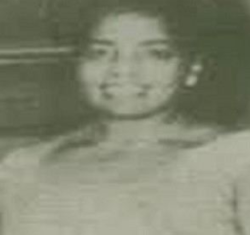
Joseph Kwame Kyeretwie Boakye Danquah was a Ghanaian politician, scholar, lawyer and statesman. He was a politician in pre- and post-colonial Ghana, which was formerly the Gold Coast, and is credited with giving Ghana its current name.

Kibi or Kyebi is a town and the capital of the East Akim Municipal District, a district in the Eastern Region of south Ghana, on the eastern slopes of the Atewa Range. Kibi lies at an altitude of 318 m and, in 2013, had a population of 11,677 people.

Nana Sir Ofori Atta I, KBE was the Okyenhene or King of the Akyem people and of Akyem Abuakwa, a traditional kingdom that stretches back to the thirteenth century and was one of the most influential kingdoms of the then Gold Coast Colony. He ruled from his election in 1912 until his death in 1943.

A mobile museum is a museum educational outreach program that bring the museum to the people rather than vice versa. Typically they can be in Recreational Vehicles (RVs) or trucks/trailers that drive to schools, libraries and rural events. Their business model is to use grant or donor support, as they goal is to make the museum exhibit accessible to underserved populations. Below are some examples of mobile museums.

Ataa Oko Addo was a Ghanaian builder of figurative palanquins and figurative coffins, and at over 80 years of age he became a painter of Art Brut.

Fantasycoffins or figurative coffins, also called “FAVs” and custom, fantastic, or proverbial coffins, are functional coffins made by specialized carpenters in the Greater Accra Region of Ghana. These colorful objects, which developed out of figurative palanquins, are not only coffins but considered works of art. They were shown for the first time to a wider Western public in the exhibition Les Magiciens de la terre at the Musée National d'Art Moderne in Paris in 1989. The seven coffins shown in Paris were made by Kane Kwei (1922–1992) and his former assistant Paa Joe (b.1947). Since then, coffins by Kane Kwei, his grandson Eric Adjetey Anang, Paa Joe, Daniel Mensah, Kudjoe Affutu, Theophilus Nii Anum Sowah, Benezate, and other artists have been displayed in international art museums and galleries around the world.

Kenneth Nana Yaw Ofori-Atta, is a Ghanaian investment banker who serves as the Minister for Finance and Economic Planning in the cabinet of Nana Akufo-Addo. He was a co-founder of Databank Group, a Ghanaian financial services company, and served as executive chairman until 2012 when he resigned. He was nominated by President Nana Akufo-Addo on 10 January 2017 and assumed office on 27 January 2017 as finance minister.

Susan Barbara Gyankorama Ofori-Atta, also de Graft-Johnson, was a Ghanaian medical doctor – the first female doctor on the Gold Coast. She was the first Ghanaian woman and fourth West African woman to earn a university degree. Ofori-Atta was also the third West African woman to become a physician after the Nigerians Agnes Yewande Savage (1929) and Elizabeth Abimbola Awoliyi (1938). In 1933, Sierra Leonean political activist and higher education pioneer, Edna Elliot-Horton became the second West African woman university graduate and the first to earn a bachelor's degree in the liberal arts. Eventually Ofori-Atta became a medical officer-in-charge at the Kumasi Hospital, and later, she assumed in charge of the Princess Louise Hospital for Women. Her contemporary was Matilda J. Clerk, the second Ghanaian woman and fourth West African woman to become a physician, who was also educated at Achimota and Edinburgh. Ofori-Atta was made an Honorary Doctor of Science by the University of Ghana for her work on malnutrition in children, and received the Royal Cross from Pope John Paul II when he visited Ghana in 1980, in recognition of her offering of free medical services at her clinic. She helped to establish the Women's Society for Public Affairs and was a Foundation Fellow of the Ghana Academy of Arts and Sciences. Her achievements were a symbol of inspiration to aspiring women physicians in Ghana.

The Angolan pavilion, representing the nation of Angola, has participated in the Venice Biennale since 2013. As one of the biennial international art exhibition's national pavilions, Angola mounts a show in a Venetian palazzo outside Venice's Giardini. The first Angolan pavilion, which featured the photography of Edson Chagas, became the first African national pavilion to receive the biennial's top prize, the Golden Lion for best national pavilion. Chagas displayed poster-sized photographs of resituated, abandoned objects and weathered architecture in the Angolan capital of Luanda. Reviewers praised the interplay between the photographed subject matter and the Italian Renaissance artwork that adorned the hosting palazzo's walls. The 2015 Biennale hosted a group show of five Angolan artists on themes of intergenerational dialogue.
The Ofori-Atta family is composed of the bearers of an Akan language patronymic surname and their relatives. The family is of royal Akyem origins and has been active in business, politics, law and government in Ghana.
Adeline Sylvia Eugenia Ama Yeboakua Akufo-Addo was a First Lady in the second republic of Ghana as the wife of Edward Akufo-Addo and mother of Ghanaian president Nana Akufo-Addo.
Felicia Ewuraesi Abban was Ghana's first female professional photographer. She worked as a photographer for the country's first president, Kwame Nkrumah, for a number of years during the 1960s.
Akwasi Andrews Jones Amoako Atta Ofori Atta was a Ghanaian economist and politician. He was a senior lecturer in economics at the University of Ghana and served as ministerial secretary for Finance and Economic Planning in the Busia government.
Ghana Freedom was a Ghanaian art exhibition at the 2019 Venice Biennale, an international contemporary art biennial in which countries represent themselves through self-organizing national pavilions. The country's debut pavilion, also known as the Ghana pavilion, was highly anticipated and named a highlight of the overall Biennale by multiple journalists. The six participating artists—Felicia Abban, John Akomfrah, El Anatsui, Selasi Awusi Sosu, Ibrahim Mahama, and Lynette Yiadom-Boakye—represented a range of artist age, gender, locations, and prestige, selected by curator Nana Oforiatta Ayim. The show paired young and old artists across sculpture, filmmaking, and portraiture, and emphasized common threads across postcolonial Ghanaian culture in both its current inhabitants and the diaspora. Almost all of the art was commissioned specifically for the pavilion. Architect David Adjaye designed the pavilion with rusty red walls of imported soil to reflect the cylindrical, earthen dwellings of the Gurunsi within the Biennale's Arsenale exhibition space. The project was supported by the Ghana Ministry of Tourism and advised by former Biennale curator Okwui Enwezor. After the show's run, May–November 2019, works from the exhibition were set to display in Accra, Ghana's capital.
Robert Yaw Addo Fening is a Ghanaian historian who has made major contributions in documenting the history of Akyem Abuakwa and of Ghana. He has been accorded the award of Okyeman Kanea in recognition of his historical works. For several years he taught at the University of Ghana.

Gideon Akwasi Wiafe also known as Nana Kwasi Wiafe is a Ghanaian international fashion model, stylist and creative director. He is the founder of ThouArtKwasi, a high fashion styling brand that seeks to create high end fashion editorial looks and esthetics that reflects the stories of individuals and brands in Ghana and other African countries.

Asaase Radio is a privately owned radio station in Accra, the capital of Ghana, broadcasting on 99.5 MHz from Cantonments. It began official transmission on 14 June 2020. Among the shareholders and board members of the company are Gabby Asare Otchere-Darko(chairman; senior partner, Africa Legal Associates), the senior journalist Elizabeth Akua Ohene, the advertising consultant Reginald Daniel Laryea, Nana Adjoa Hackman , Kojo Opoku Agyeman, Nkiru Balonwu, Joseph Ofori-Atta and Ebow Brew-Hammond . The station operates under the tagline “The Voice of Our Land”.
Gallery 1957 is a contemporary art gallery located in Accra, Ghana. The gallery intends to present artists of West Africa and the diaspora. It was established in March 2016 by British construction company owner Marwan Zakhem. As of 2018, the gallery has shown artists including Serge Attukwei Clottey, Gideon Appah, Modupeola Fadugba, Godfried Donkor, Yaw Owusu, and Zohra Opoku.

Gilbert Asante is a Ghanaian creative director, photographer, and a multidisciplinary artist. He is best known for his viral images of Ghanaian celebrities including Joselyn Dumas, Boxing legend Azumah Nelson, Lydia Forson, Big Brother Nigeria Housemate, Nengi.












